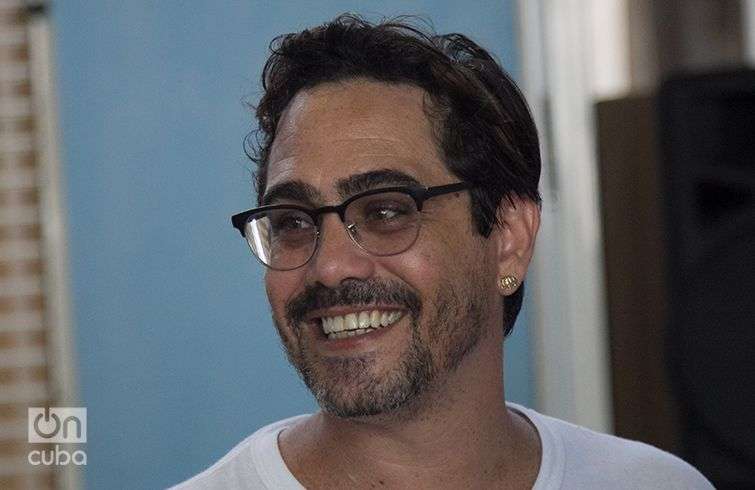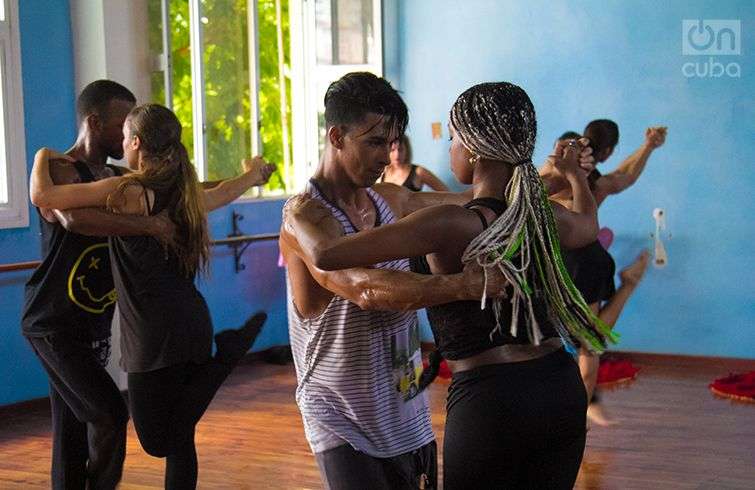With the Catherine Zeta-Jones of Chicago, or the Nicole Kidman that moved the Moulin Rouge we could go back to the most impressive of the universe of the musicals seen on film. But if we think about recreating the famous Broadway productions in Cuba, we would surely be, at the least, rash.
However, boldness drives talent and only taking risks gets you tickets to cross the door of good fortune. That’s how the creators of Assen Dance Habana understand it, a new musical show company that will soon makes its debut on the island.
Ernesto Tamayo, its leader and former actor of Teatro Estudio, is returning to Cuba after living a decade in Mexico. A disciple of great maestros of Cuban theater – among them Berta Martínez and Abelardo Estorino – Tamayo is bringing with him Argentinian choreographer Alejandro Assen, together with whom he created Assen Dance & Performance seven years ago.
“Despite the fact that we are competing with technological development, we have achieved a dance society widely positioned in the tourist destinations of Cancun, the Riviera Maya and Argentina. Today we are extending it to the island,” he explained to OnCuba.
What is most outstanding about Assen Dance & Performance is its aesthetics, with New York, Las Vegas or Paris referents – and its concept that the show is active, where the audience doesn’t sit passively to observe, there are not more than four movements and the songs don’t last more than three minutes.
If we take into account that he always knew that his thing would not be acting but rather production, we understand why Tamayo has set himself the aim of placing Cuba in the most important catalogs of international showbiz.

Assen Dance & Performance does not work with professional dancers, according to Alejandro Assen. In Havana the company concentrates graduates from the national school of artistic education. “We bring together the best Cuba has to show it a new form, that of jazz ballet, of multidisciplinary dancers and singers,” he affirms.
After a bit over two months of existence, Assen Dance Habana has its presentation card, Sway, almost ready, a production that can be defined as a music hall, which offers a folkloric trip through India, Argentina, Spain, the United States, France, Russia and Cuba.
His foray into the Dance Broadway Center has allowed Alejandro Assen to assume the artistic direction of a 47-minute work non-stop and that, when finding coherence between the art of dance and commercial show, will compete with the world’s highest standards.
In this way, the jazz technique of the Chicago musical will be the guideline. The audiences will enjoy a production with the presence of constant cuts, rapid movements of arms and legs, marked contractions, as well as the use of high visual impact props and a double stage that will include a video mapping – a resource that allows for projecting animation and images on real surfaces – related to each story.
The choreographer is hoping for a proposal that combines everything and awakens strong emotions. And Sway will pass through the classic Bésame mucho to the Gipsy Kings and La Vie en Rose with electronic music; as well as a tango sprinkled with salsa, a Colombian vallenato, a Hindu wedding, a tribute to the rumba and a Louis XV-style cha-cha.
Since it is a production with the dynamics of the video clip, its creators hope it will be something new for the public. For Alejandro Assen, the company – which will be marketed by Escenarte and belongs to the National Council of Scenic Arts – has had a 70 percent win because of the formation of the dancers and their rigorous training.

In a review of the members of Assen Dance Habana, we can find from a young ballet teacher from the Higher Institute of Art, to dancers of folklore or from the National School of Art. It is also made up by self-taught young people.
From the point of view of Ernesto Tamayo, that diversity becomes evident on the stage. “My job has been hard because the objective is not to achieve that they dance, but rather that they communicate through gestures,” he affirms while considering that there’s a big debt in the Cuban dance schools because they are creating dancers, not performers.
The 45-year-old director of Assen Dance Habana is in contact with three major hotel chains in the country: Blue Diamond, Meliá and Iberostar, to market the project, which is of vital importance for the manifestation, since he believes there is a quality cultural product on the island and it needs to be exploited in sectors like tourism.
One would have to take into account that being a pioneer in something is always an immense challenge, but to keeping up a project is the most difficult part. “The expectation we will leave will be great, both artistically and commercially,” Tamayo said and he announced they will have a second and third event that they will possibly dedicate to women and retro music.
Assen Dance Habana will continue with the format of a dozen members and has the tremendous challenge of inserting itself in the country’s dance movement whose vanguard comprises companies like Lizt Alfonso Dance Cuba and Acosta Danza.














